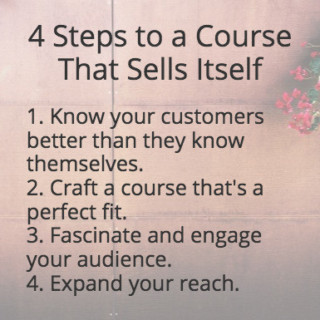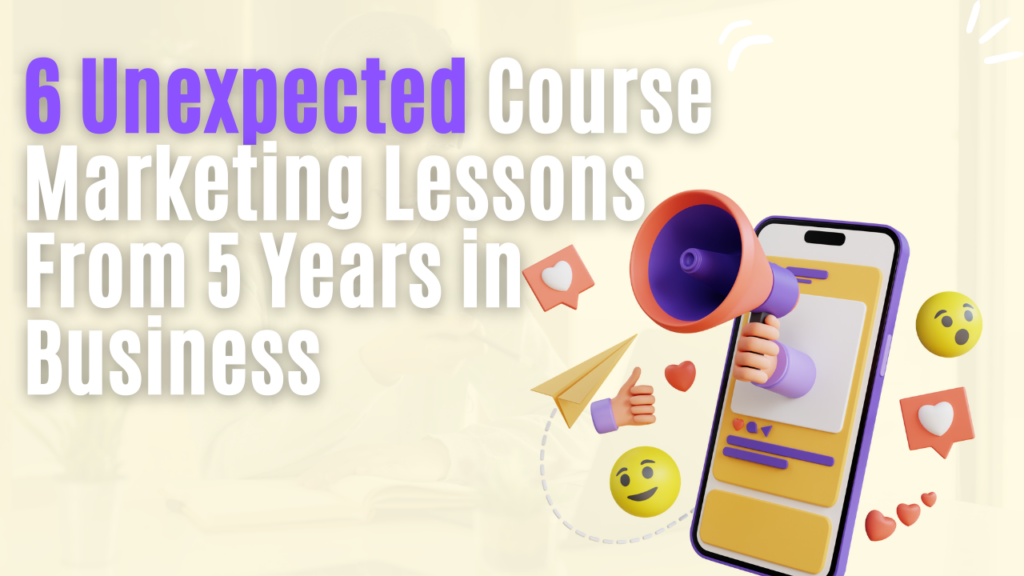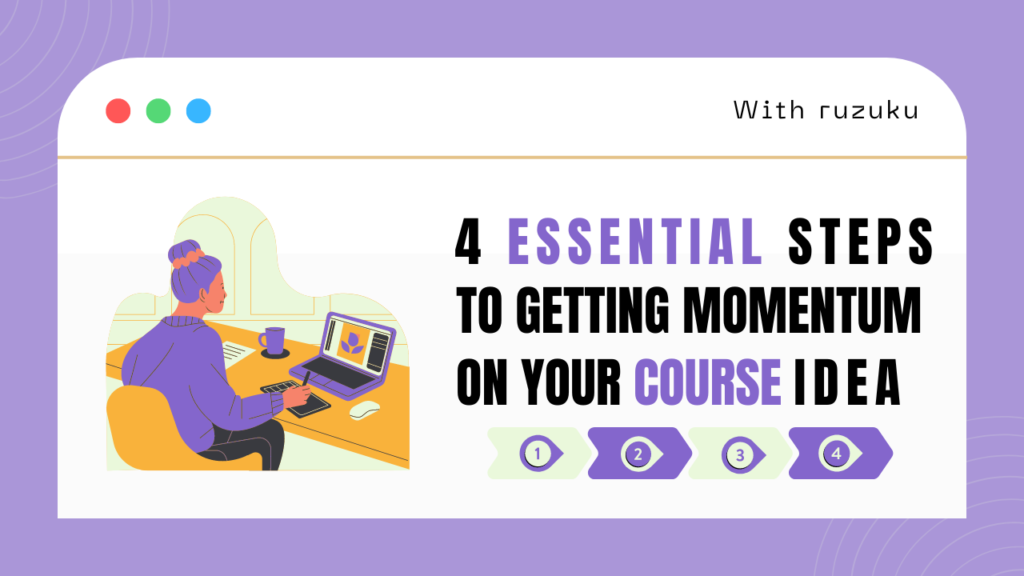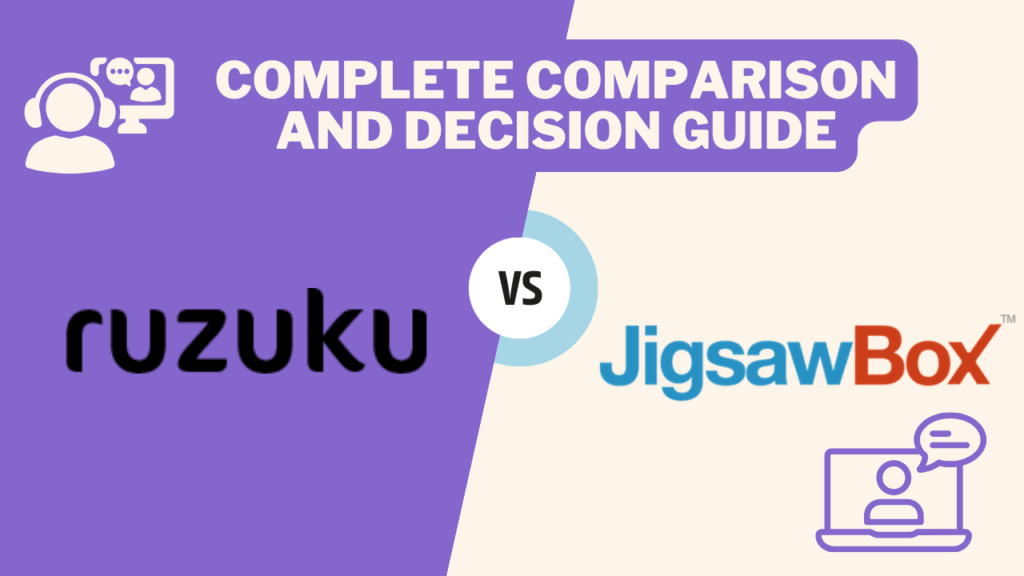Marketing your online course may be one of the most important things you do as a new course creator.
But first you have to learn how to market.
And it seems no one can tell you exactly where you should start.
If you ask ten different experts, they’ll give you ten different answers — and the last thing you need is to pick through conflicting information.
Instead, you need a workable and realistic plan.
That’s why I sat down with Ruzuku’s co-founder Abe, rainmaker Bill, and affiliate manager Lisa to talk about the lessons we’ve learned through years of working with customers who are struggling to market their online courses.
What we discovered might surprise you.
1. There’s no secret sauce
Here’s the uncomfortable truth: if you want to succeed as a course creator, you have to put in the time and do the work.
 You must be consistent. Plain and simple.
You must be consistent. Plain and simple.
You also have to make sure to give yourself time to see results before you rush ahead to something new and shiny.
Surprisingly, it may not even matter exactly what you do — as long as you do these three things:
- Try something that has the potential to succeed.
- Follow through. Create your course and get the word out.
- Allow enough time to see real results.
This should give you hope, because luck doesn’t enter the equation at all. Your success depends on your constant efforts at the right things.
2. Effort is deceptive
This may surprise you, but chances are you’re not doing as much as you think you are — at least of the right things.
Think about it.
It’s easy to feel “busy” working on your online course but never get anything of real value done.
 If you frequently don’t see results at the end of a particular week or month , you might think your strategy’s not working.
If you frequently don’t see results at the end of a particular week or month , you might think your strategy’s not working.
But the truth is there’s a chance that you haven’t put in nearly enough time or effort (yet).
Bill thinks that many people have unrealistic expectations of the ROI (return on investment) of their marketing efforts.
They don’t understand that it takes time to generate interest.
They say, “I marketed my course here and there, but no one ever came,” when the problem is actually that they’re not marketing to the right people, or their course idea isn’t quite right.
And as Abe says, “It’s the difference between being ‘busy’ and being ‘effective’. Are you doing the right things? You can put hundreds of hours of effort into the wrong thing – or something that’s not effective – because it’s not grounded in a real understanding of who you serve.”
It’s easier than you think to find the right things to work on.
3. Passive income isn’t
Let’s stop for a minute and examine your motivations. Why do you want to create an online course?
 Maybe you see a real need in your industry and have a solution to a troublesome problem that you can help people solve.
Maybe you see a real need in your industry and have a solution to a troublesome problem that you can help people solve.
As a bonus you can make some money in the process (you know that there’s no business if you’re not able to support yourself.)
But… if your motivations are mostly money-driven, you may want to take a hard look in the mirror and decide whether this path is really for you.
Here’s the truth: there are a lot of claims out there, from some very big names, who will promise you the moon and stars (i.e., that you can make create a passive income stream with very little work, and in no time at all). But it’s all just hype.
Creating passive income takes time and hard work. And it’s never hands-off. With consistent effort over the long run and a good plan, your business and your income will grow.
There is no instant formula for success, and you can’t just focus on the money.
4. The most effective goal isn’t obvious
Most course creators focus on raking in the cold, hard cash. We get it.
But courses can take time to pay off. If your only measure of success is dollar signs, you’re going to miss some really important information that will influence your long-term results.
 What if you concentrate instead on what you can learn from your current situation?
What if you concentrate instead on what you can learn from your current situation?
Abe tells people all the time, “Rather than focusing on ‘I want to make $X during my next launch,’ you should focus on ‘I want to learn X about my audience’.”
By setting a learning goal (I want to learn as much as possible about how people are engaging with the emails I send them) rather than a financial goal (I want to earn X amount of money) you’ll be able to progress much faster the next time around.
So much of what you hear from industry experts these days is all about making money immediately with your course launch, but that emphasis steers many new course writers in the wrong direction.
The fact is, the first time you put a course out, nothing spectacular is going to happen.
But you will learn a lot — and you’ll improve every time you put out a new version.
That’s when you’ll start to see better results and bigger earnings.
5. Skipping ahead sets you behind
New course creators run into big problems when they try to mimic bigger companies or gurus who have years more experience.
 You’ll often see these stories in case studies.
You’ll often see these stories in case studies.
Case studies are a fantastic way to learn what’s working for other people, but they can also lead you astray.
These case studies are often a one-in-a-million story of success, and Abe says there’s usually a big disconnect between the cool case study on a blog versus the reality that most people experience.
Bill sees the same thing when he talks to prospective Ruzuku customers — a lot of folks want to see a case study of someone in their industry (which is good), but they usually always want a “big name” who has been really successful, thinking that they can then copy what that company is doing (which is potentially not so good).
The problem is that you risk getting stuck inside the box of what’s working for someone who isn’t you, isn’t serving your exact customers, and isn’t at the same stage of business that you are.
Can you see where this could lead you to the wrong conclusions for your courses?
6. You can make marketing easy for yourself
While much of this post is meant to be a reality check, there is good news:
You’re probably making your course creation and marketing harder than it has to be.
 Do you have a process? Daily tasks? Do you use simple tools to keep yourself on track?
Do you have a process? Daily tasks? Do you use simple tools to keep yourself on track?
Or do you haphazardly flit about, doing a little bit of this and a little bit of that, getting distracted and not giving anything a chance to work?
Make sure that you map out your steps (as best you can) and follow your plan.
Your plan can be as simple as putting together a 12-point checklist of the things that you need to do to market the next session of your course.
You can use fancy project planning software, sidewalk chalk, or a pencil-and-paper “to do” list — whatever works for you.
The tool doesn’t matter. Sticking to your plan does.
Build in milestones. You can adjust as you go, but stay focused on the task at hand.
Most importantly, don’t be tempted to skip ahead to the end — or to the parts you think will be fun.
You have to start somewhere – and that means at the beginning – with no course, no audience, and no real idea what the heck you’re doing.
There’s nothing wrong with that. Every successful course creator started exactly where you are now.
The only difference between them and you?
They followed through on their plan.
4 steps to a course that sells itself
So now that you know what doesn’t work, here’s what does:
Step 1. Know your customers better than they know themselves
The real key to making it easy to market your online course is to get the right course in front of the right people, in the right format for them.
Lisa says if you can do that, “Marketing isn’t an issue. At that point, people will beg you to take their money.”
But this involves knowing your target market inside and out, and finding that match is a real challenge for most beginners.
Most people don’t know what’s special about themselves or their course offerings, or what’s important and special about their audience.
That thing is usually something you overlook or take for granted. It’s probably something that feels really simple and basic to you.
So how can you find it?
Often other people will tell you. It could be a friend or colleague — or even better, someone in your target audience who says, “Wow! You do that?!”
The best way to uncover your uniqueness is to talk to your audience.
The incredible power of simple conversation
When we say talk to your audience, we mean actually speak. One-on-one. In person, if possible.
When you speak in depth with one person, you find out what they’re really thinking, feeling, and struggling with. You can find out your audience’s deeper motivations and challenges.
And while the idea of sitting down one on one can feel intimidating, Abe says, “It just means having a conversation.” It can seem difficult at first, but it should feel natural once you get over your initial resistance and start reaching out.
Abe also says that big companies and data-driven marketers create profiles and figure out their marketing strategy and tactics based on large amounts of data. They treat marketing like a science. When you’re just getting started, you can’t do that.
But, you can develop a real understanding of your customer through empathy.
“Empathy isn’t imagining. You develop empathy from talking to people and immersing yourself in the problem until you understand your customer deeply.”
Step 2. Craft a course that’s a perfect fit
“The aim of marketing is to know and understand the customer so well the product or service fits him and sells itself.” – Peter Drucker
After you’ve found those first ten or twenty people in your extended networks and had coffee (or a phone call) with them to really understand what they’re going through, then you can start to put together a course that’s the perfect solution to the problem they’re having.
Bill offers a series of questions you can ask yourself as you’re working through this step.
- Who is this person that’s having this issue? What are their desires and goals, or their fears and frustrations?
- What are the big benefits that they will get from your course?
- How will they be successful in your course?
- Where do these people congregate online, or within your networks? How can you connect with them?
When you match your solution to the exact “right” person and tailor it to their particular situation, you set everyone up for success.
You create a successful course that sells well, your customer implements the perfect solution to their urgent problem (or the perfect path to their dearest desire) and everyone’s happy.
Bill stresses that not everyone will love your course — and that’s okay. You don’t have to solve this problem for everyone — only for your perfect target audience match.
Step 3. Fascinate and engage your audience
Do you know what gets your audience excited?
 Do you know what keeps them up at night, either because they’re worried silly or because they’re so exhilarated that they can’t stop thinking about it?
Do you know what keeps them up at night, either because they’re worried silly or because they’re so exhilarated that they can’t stop thinking about it?
Take a minute and write some of these things down. The more you can come up with, the better.
Then when you create marketing content for your audience, keep these topics in mind — and be sure to use their own words to describe what they’re feeling.
Tempt them with an irresistible result, one that that they told you they must have.
Help them imagine what the future could look like if they take your course.
By the time you get around to selling the course, they should already “be sold”.
For example, if your online course teaches people how to keep their website up to date and looking great, you could engage with them this way:
- Tap into their worries — “Is your website an embarrassment? Are you still stuck in the 2000’s because you don’t know how to use the new technology? Are you driving potential customers away?”
- Tempt them with an imagined future — “ Take my course and build a new website you can be proud of and that will bring you new customers while you sleep.”
But don’t get ahead of yourself. You’re not ready to use the playbook of someone who is more advanced — at least not yet.
Abe insists,
“The beginning playbook is much more personal. You have to do things that don’t scale, that take personal effort and sweat equity.
This isn’t widely understood.
Ruzuku lived through this — we started something from scratch, with no customers, which meant going out and talking to people to get our first customers.”
When you have your first customers and you understand them better than they understand themselves, you’re ready for the final step.
Step 4. Expand your reach
During our conversation, we decided that “marketing” is a severely overloaded term.
In other words, it encompasses so many different things that it sometimes means nothing at all!
What most people think of as marketing is actually distribution, or getting your course in front of even more people. It’s a component of marketing as a whole, but it’s just one small piece of the picture.
And distribution causes people to fall into the trap of thinking that they don’t like marketing.
Lisa says:
“You think you should be doing something you hate, because you ‘have’ to do it, because that’s what the expectation is. Like marketing is this whole other beast.
But there are so many other ways to market, and finding something that fits you, something that you enjoy doing, can be more effective than forcing yourself to do something you hate.
People read those sexy case studies, and think that they have to do things the exact same way — but if it’s not the right style or the right thing for you, there’s a chance that it won’t work.
Look for the strategy that fits your personality, your style, and doesn’t make you want to cry every time you think about doing it!”
The good news is that your marketing plan doesn’t have to be big and complicated.
When you’re just getting started, you should aim to keep it as simple (and fun) as possible.
Stop struggling with marketing
The steps to successfully marketing your online course are simple:
Hard work. Consistent effort. And a marketing plan that works for you.
Because no matter how hard you wish for them, magical gremlins won’t pop out of the walls and give you money for your course.
Remember, marketing rewards the persistent.
So quit “trying” to market, and start trying to describe what you do to the perfect people.
Quit chasing after shiny objects. Stop getting distracted by the latest case study describing how so-and-so used a tactic that’s not practical for your stage of business.
Instead, go find those ten or twenty people you can sit down with, and have in-depth conversations with them.
Once you talk to enough people, you’ll be well on your way to a course that sells itself.
How many people have you talked with one on one about your course idea? If the answer is none, what’s been holding you back? Let us know in the comments!




